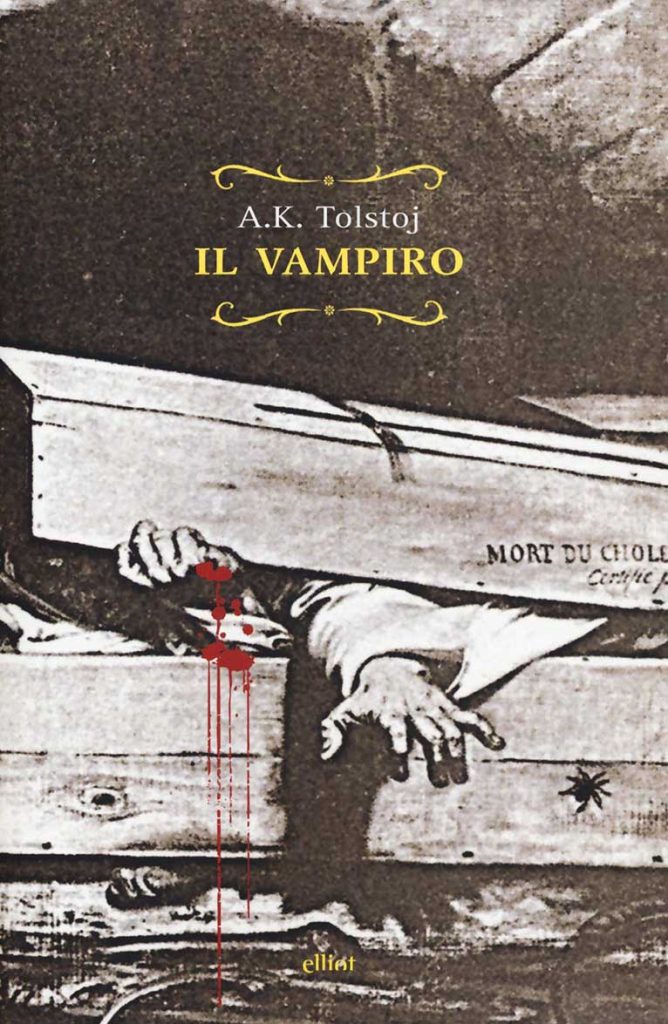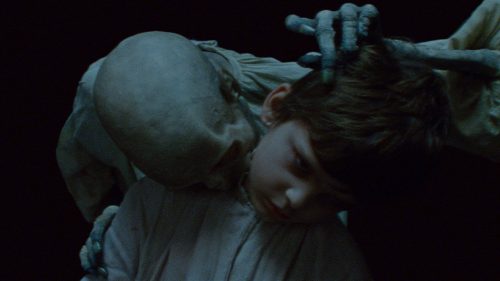

The film, directed and interpreted by Adrien Beau, is adapted from gothic novella The Family of the Vourdalak by Aleksey K. Tolstoy. Old Gorcha begs his family to put off their travels for six days
Aleksey Konstantinovich Tolstoy wrote The Vampire, or, in original Russian form, Upir, at twenty-four years of age. At the time, his more famous relative Leo was thirteen. Revered literary critic Vissarion Belisnky, an absolute authority in theatre and prose, praised the novella for the “richness of effect… density and liveliness of colour… tension of fantasy and feeling.” We are at the time when Europe was discovering gothic authors and fantasy literature. Edgar Allan Poe wrote Maelzel’s Chessplayer in 1836, E.T.A. Hoffman published the Fantasiestücke in Callots Manier in 1814, Adelbert von Chamisso also published Peter Schlemihl in 1814. The famous contest launched by Byron in his Geneva Lake villa, which brought about Mary Shelley’s Frankenstein and Polidori’s The Vampyre, dates back to 1816. Not even Gogol’ eluded the fashionable trend. In 1835, he wrote The Viy, in his own words: “a colossal creation of folk fantasy.” Enlightenment earlier and Positivism later found their counterbalance in Romanticism up to the point of extreme emotion, of agony and torment, of fascination for fright and research for the sublime. The Vampire is a story of mystery, fear, and seemingly unexplainable phenomena, and is not the first story Tolstoy dedicated to the theme. Back in 1839, he wrote, in French, The Family of the Vourdalak, which filmmaker Adrien Beau adapted into his debut feature The Vourdalak, one of the seven entries in the International Film Critics’ Week programme.
In the aftermath of the Congress of Vienna, a group of aristocrats and diplomats convene at the castle of a rich princess and spend some time telling stories. The Marquis of Urfé, an aged ladies’ man, tells a story that happened to him personally some time earlier, in 1759. Having taken refuge in the Moldavian country to forget about an unrequited love, the marquis is warned by a local family about a terrible danger: a vampire is afoot, and it is said that anyone the vampire bites will be cursed to suck their own family’s blood. You can imagine what happens next. All the while, the marquis falls in love with a local woman, but her brothers force him to move on and forget about her. One year later, the marquis is back and finds beautiful Sdenka. She is willing to go with him, but… a crescendo of horror ensues.
About the title: the vourdalak is probably a corruption of Slavic word volkodlak, meaning the wolfskin-clad. It is an homage to Pushkin, who first used the word in an 1836 poem. Further reference: the Primary Chronicle, a twelfth-century text recording a vampire invasion in the city of Polotsk in 1092. A. K. Tolstoy explains how the original Slavic word, upir, is the etymon of the word vampire, a free transliteration into Latin alphabet on part of some Hungarian monks.
This novella is quite entertaining. It amazes and terrifies, with little bits of wonder and fascination thrown in as well as, puzzling as it sounds, a strange kind of wholesome fondness.